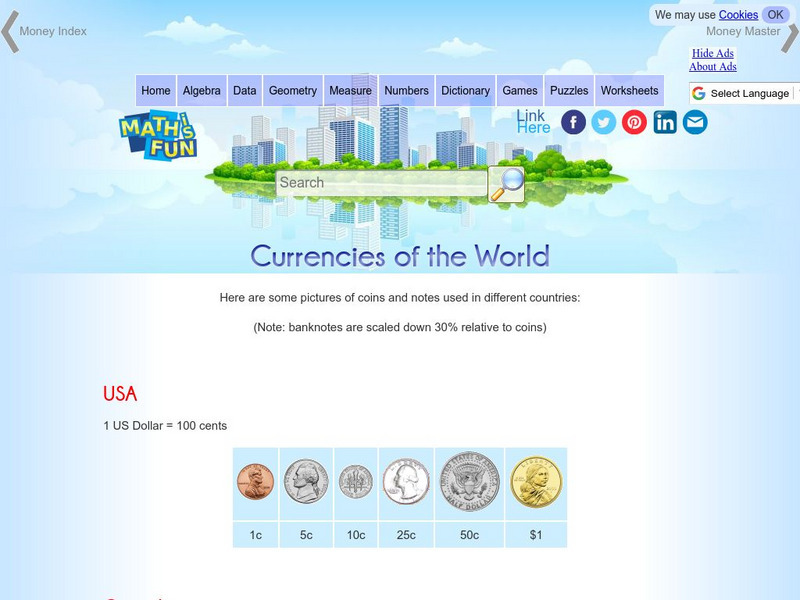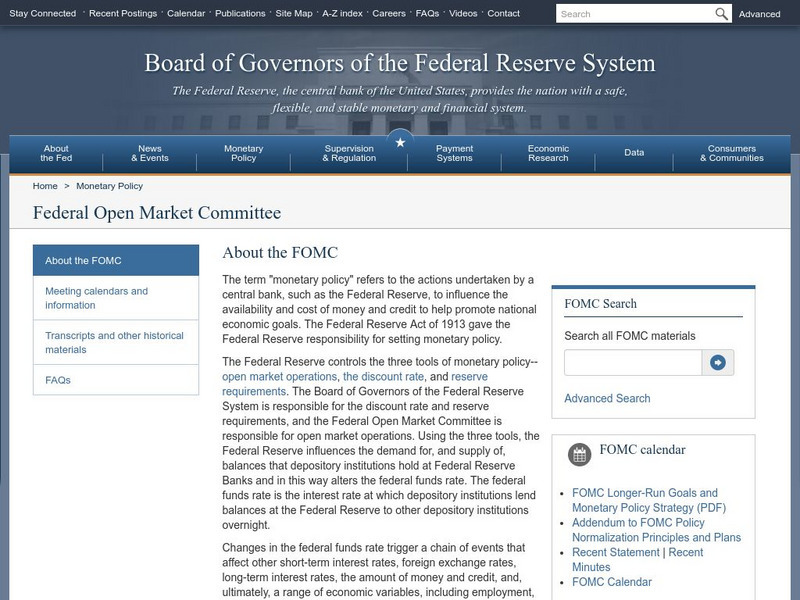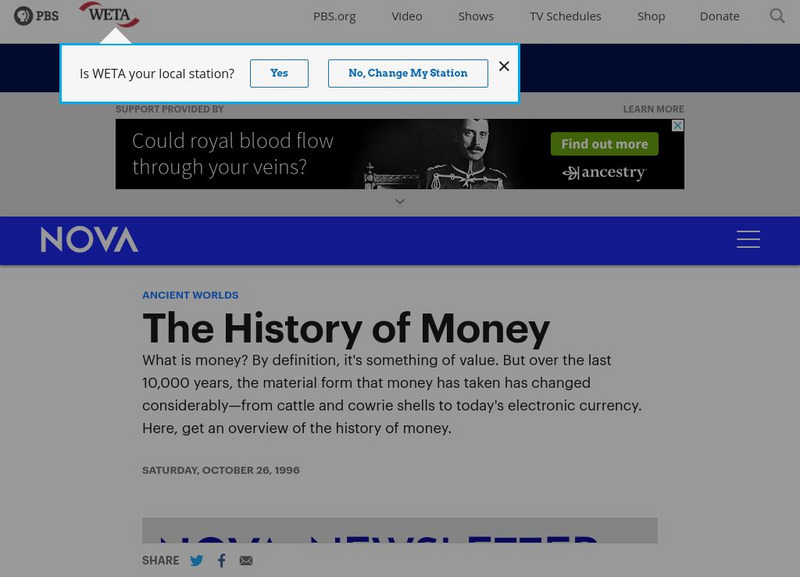Federal Reserve Bank
Federal Reserve Bank of Minneapolis: Counterfeit Protection
The Federal Reserve Bank of Minneapolis presents a page that looks at ways the Bureau of Engraving and Printing protects against the production of counterfeit money.
Federal Reserve Bank
Federal Reserve Bank of Minneapolis: The History of Money
The Federal Reserve Bank of Minneapolis traces the history of money up from coins in ancient times to modern paper, currency, and e-money.
University of Virginia
University of Virginia: Leslie Brock Center for the Study of Colonial Currency
Discusses the different kinds of paper money released by each of the colonies and the disputes, controversies, and arguments that resulted.
Smithsonian Institution
Smithsonian Learning Lab: What Shape Is Money? Money Doesn't Have to Be Round or Rectangular
Pigs, rice, nuts, teeth, eggs, feathers - these are all types of currency! This lesson plan discusses different types of objects that can be used as currency and students will decide what qualities make an effective currency. Included...
Federal Reserve Bank
Federal Reserve Bank of Atlanta: Spotting Counterfeit Currency
This resource explains how to detect counterfeit money, what to do if you receive it, and the laws against it.
Other
Indigo Image: Counterfeit Detection
Learn about what counterfeit printing is and how it is detected. Also learn about measures that are taken to prevent counterfeiting.
Math Is Fun
Math Is Fun: Currencies of the World
Find here a large collection of charts showing images of currency for countries around the world.
Council for Economic Education
Econ Ed Link: Exchange Rate Calculator
Use this exchange rate calculator to determine whether the U.S. dollar has appreciated or depreciated against other currencies.
Can Teach
Can Teach: Pennies a Little Goes a Long Way Game
Use this fun learning game in your classroom to help young scholars understand the value of money. Groups of students will be exchanging pennies for other types of coins.
The Federal Reserve System
Federal Reserve Board: Federal Open Market Committee
This page provides information about the federal Open Market Committee and covers its structure, meeting schedule, minutes and current members of the FOMC.
PBS
Nova Online: History of Money
A timeline of money from 9000 B.C. to the present day that explains the types of money being used at various times in history.
A&E Television
History.com: Infographics: The Story of Money
Get the facts on the earliest forms of money and the origins of the U.S dollar, discover which country created the first paper money, and find out how the Inca built a great empire without using money.
Council for Economic Education
Econ Ed Link: Pennies Make Cents
This is a lesson that allows for students to examine pennies. Includes links to information about coins as well as activities. It also includes information on the history of the penny.
Council for Economic Education
Econ Ed Link: What Face Do You Use?
The students will recognize that in order to facilitate the exchange of goods and services, most nations create currency for use as money. They will examine the characteristics of money by comparing and contrasting examples of U.S. and...
Council for Economic Education
Econ Ed Link: The Story of Jack and the Bank Stalk
Fairy tales have always been used to give lessons about life. The story of Jack and the Bean Stalk is a good activity about the importance of knowing about money and banks. The story of Jack asks the question, "What is money?"
Council for Economic Education
Econ Ed Link: Changes in Change
This lesson begins with students visiting one web resource that gives them practice in counting money. The second resource goes one step further in that students are given opportunities to make change for make-believe purchases.
Council for Economic Education
Econ Ed Link: Bill, Are You Bogus?
In a barter system, people have to trade goods and services for other goods and services. In an economy that produces millions of goods and services, barter is very difficult. Think of all the stuff (goods and services) you have.
Council for Economic Education
Econ Ed Link: Agent Pincher: The Case of the Missing Susan B. Anthony Dollar
Agent Penn E. Pincher is again called out on a case. It seems that in 1979 the U.S. Bureau of Engraving launched a new one-dollar coin. However, most citizens haven't seen it in several years. This case may be from the cold case files....
Council for Economic Education
Econ Ed Link: Agent Pincher: P Is for Penny or Where Did Money Come From?
What if we woke up tomorrow and found that there were no more pennies? Or what if we found that money had disappeared altogether -- not only from our pockets but from banks, stores and all the other places where we would expect to find...
Council for Economic Education
Econ Ed Link: The Penny Problem
Middle schoolers will research the cost of making the penny an the use of the penny and come up with reasons why the penny should or should not be continued to be made and used.
Council for Economic Education
Econ Ed Link: The Need for Money That Everybody Can Use
The U.S. Currency currently has two faces. The old bills are being replaced with new designs. The study of the look of the bills will lead into a discussion of their usefulness for a segment of our population: the visually impaired people.
Council for Economic Education
Econ Ed Link: No Funny Money, Honey I Want the Real Thing!
Do you know what funny money is? It's NOT the real thing! Find out how our government tries to make our money hard to copy in this lesson about real and fake money.
Smithsonian Institution
Smithsonian Education: What's It Worth? Thinking About Weights and Measures
A lesson on the system of currency used by the Akan people of Ghana and how it compares to systems used today.












